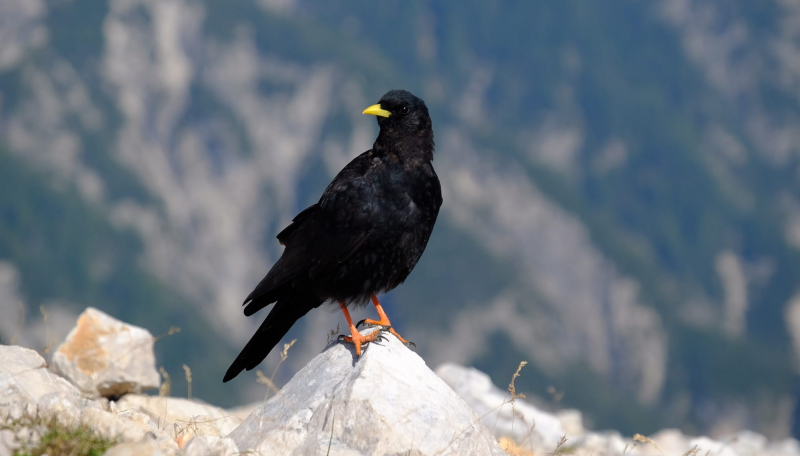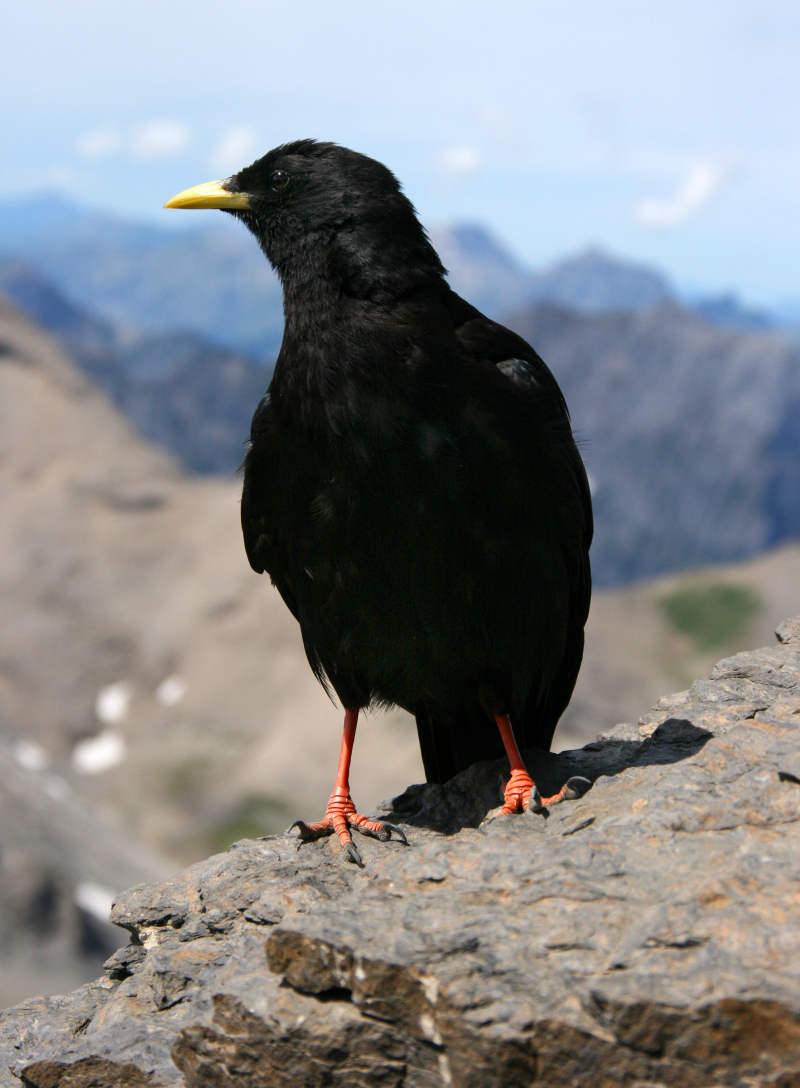Alpine Chough

The Alpine Chough can survive at elevations of up to 21,300 feet. More nests have been built by this bird than any other species in the world. They can resist heavy gusts thanks to their large, robust wings and tails. They can maneuver more easily thanks to their deeply notched wing tips. These flock-flying birds frequently make use of air currents to reduce the amount of energy they expend while flying. Because they are nestled among rocks, these birds are more protected from harsh gusts.
Compared to normal eggs, these eggs contain fewer pores. These eggs consequently lose less water. The eggs' hemoglobin is also altered, requiring less oxygen. The body of the hatchlings is covered in a substantial layer of down when they are born. These ubiquitous and plentiful species are not globally threatened, despite being vulnerable to parasitism and predation, as well as local population decreases brought on by changes in agricultural methods. Because the necessary Alpine habitat is moving to higher elevations because of climate change, this could pose a long-term threat.











